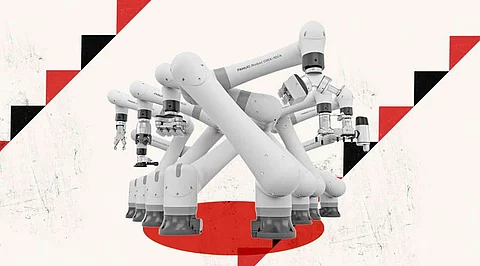Robotics and Automation: The Future of Business Automation

Revolutionizing business efficiency by embracing robotics and automation for the future
In the ever-evolving landscape of technology, robotics, and automation have emerged as transformative forces, revolutionizing the way businesses operate. With their ability to perform repetitive tasks with precision and efficiency, these advanced systems are propelling industries toward a future of streamlined processes and increased productivity. The benefits they offer, such as enhanced accuracy, improved quality control, and cost optimization, are driving businesses to integrate these technologies into their operations.
From manufacturing and logistics to healthcare and agriculture, robotics and automation are reshaping industry sectors, optimizing resource allocation, and empowering businesses to stay competitive in a rapidly changing world. As we embrace the potential of robotics and automation, we unlock a future where efficiency, innovation, and strategic growth converge. Join us in exploring this exciting frontier of business automation at https://contgpt.com.
The Benefits of Robotics and Automation
Increased Efficiency and Productivity
Robotic systems and automated processes offer businesses the advantage of enhanced efficiency and increased productivity. By automating manual and repetitive tasks, companies can free up valuable human resources to focus on more strategic and creative endeavors. This not only optimizes overall productivity but also leads to significant cost savings in the long run.
Improved Accuracy and Quality Control
In industries that require precise measurements, repetitive assembly, or stringent quality control, robotics, and automation play a vital role in ensuring accuracy and consistency. Unlike humans, robots are not susceptible to human errors, fatigue, or distractions, resulting in improved quality control and reduced defects. This ultimately translates into enhanced customer satisfaction and loyalty.
Enhanced Workplace Safety
The integration of robotics and automation can create a safer work environment for employees. By delegating dangerous and physically demanding tasks to robots, businesses can reduce the risk of accidents and injuries. Additionally, automation minimizes exposure to hazardous substances and repetitive strain injuries associated with certain manual tasks, fostering a healthier and more secure workplace.
Cost Optimization and Competitive Edge
Implementing robotics and automation solutions can lead to significant cost savings for businesses. While the initial investment may be substantial, the long-term benefits outweigh the expenses. Automation reduces labor costs, minimizes errors, and optimizes resource allocation. These factors contribute to improved profitability and provide a competitive edge by enabling companies to deliver products or services more efficiently than their competitors.
Industry Applications
Manufacturing and Assembly
The manufacturing industry has been at the forefront of embracing robotics and automation. Robotic arms, automated assembly lines, and smart factories have become increasingly common. These technologies facilitate rapid production, streamlined assembly processes, and increased customization capabilities. By leveraging robotics and automation, manufacturers can meet consumer demands faster, maintain consistent product quality, and adapt to changing market trends with ease.
Logistics and Warehousing
Efficient logistics and warehousing operations are crucial for businesses to meet customer expectations in today's fast-paced world. Robotics and automation offer solutions such as automated picking, packing, and sorting systems, optimizing order fulfillment processes. These technologies enhance inventory management, reduce shipping errors, and expedite delivery times, enabling businesses to provide exceptional service and maintain a competitive edge in the market.
Healthcare and Medicine
Robotics and automation are revolutionizing the healthcare industry, transforming patient care, diagnostics, and surgery. From robotic surgical systems that perform precise, minimally invasive procedures to automated drug dispensing systems, these advancements are improving treatment outcomes and patient safety. Additionally, robotic exoskeletons are assisting in rehabilitation and physical therapy, enhancing the quality of life for patients with mobility challenges.
Agriculture and Farming
The agricultural sector is increasingly adopting robotics and automation to address challenges such as labor shortages, rising costs, and food production scalability. Autonomous farming equipment, precision agriculture technologies, and robotic harvesting systems are revolutionizing traditional farming practices. These advancements enable farmers to monitor crops, optimize resource usage, and increase overall productivity while reducing environmental impact.
The Future of Business Automation
As technology continues to advance at an unprecedented rate, the future of business automation holds immense potential. The integration of robotics, artificial intelligence (AI), and machine learning (ML) will further amplify the capabilities of automation systems. Businesses will witness the emergence of autonomous vehicles, humanoid robots, and advanced AI-powered systems that can adapt, learn, and make intelligent decisions in real-time.
.png)

